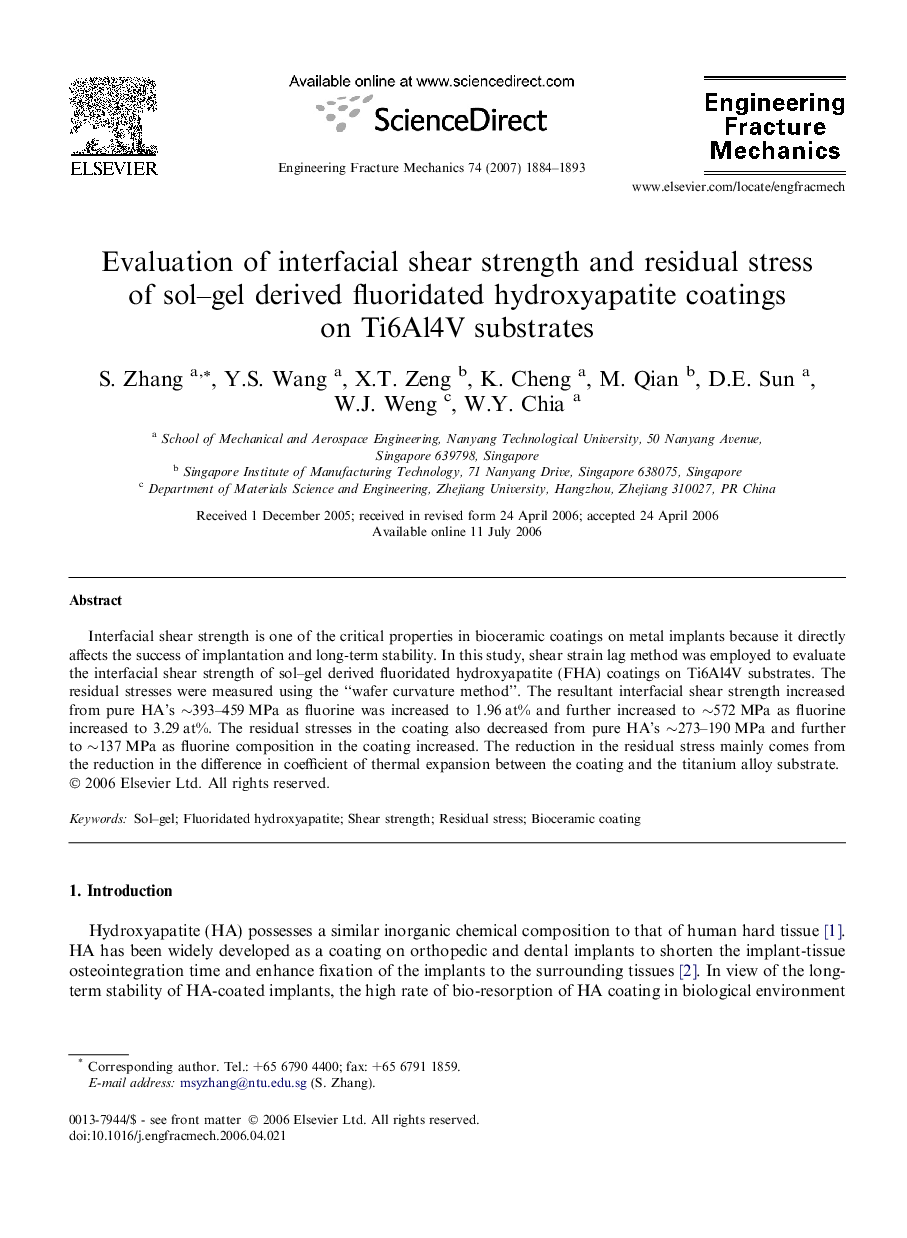| Article ID | Journal | Published Year | Pages | File Type |
|---|---|---|---|---|
| 10415227 | Engineering Fracture Mechanics | 2007 | 10 Pages |
Abstract
Interfacial shear strength is one of the critical properties in bioceramic coatings on metal implants because it directly affects the success of implantation and long-term stability. In this study, shear strain lag method was employed to evaluate the interfacial shear strength of sol-gel derived fluoridated hydroxyapatite (FHA) coatings on Ti6Al4V substrates. The residual stresses were measured using the “wafer curvature method”. The resultant interfacial shear strength increased from pure HA's â¼393-459Â MPa as fluorine was increased to 1.96Â at% and further increased to â¼572Â MPa as fluorine increased to 3.29Â at%. The residual stresses in the coating also decreased from pure HA's â¼273-190Â MPa and further to â¼137Â MPa as fluorine composition in the coating increased. The reduction in the residual stress mainly comes from the reduction in the difference in coefficient of thermal expansion between the coating and the titanium alloy substrate.
Related Topics
Physical Sciences and Engineering
Engineering
Mechanical Engineering
Authors
S. Zhang, Y.S. Wang, X.T. Zeng, K. Cheng, M. Qian, D.E. Sun, W.J. Weng, W.Y. Chia,
